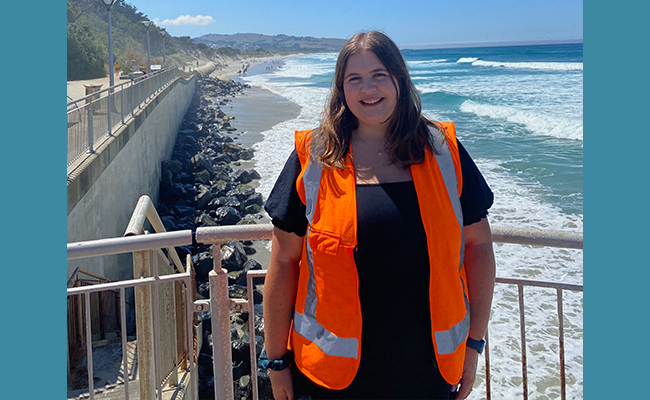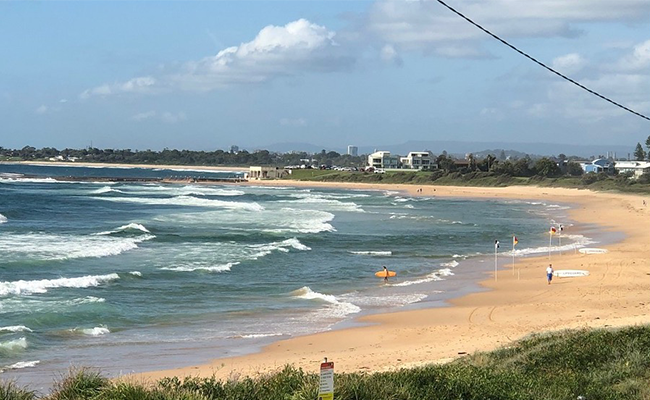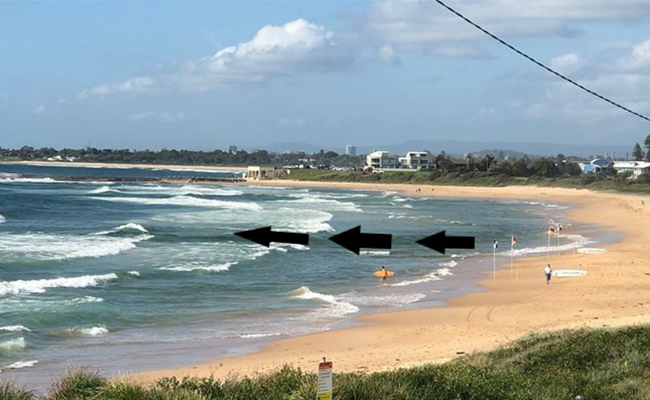Thursday 26 January 2023 2:46pm

Rachel Irvine is conducting research into identifying rip currents. Dunedin born and bred, she wants people to be able to enjoy the beach, go for a swim and not end up in disaster.
Rachel Irvine’s summer spent on the beach will bring valuable insight into rip current hazards.
A rip current is a narrow body of water moving out to sea. These pose a risk to people in the water as they can sweep people out to sea quickly.
As we have been seeing far too often in news reports this summer, ocean swimming is a hazard that can prove fatal. Drowning Prevention New Zealand reports the country is in the unenviable position of having one of the higher drowning rates in the OECD.
Rachel’s research focusses on understanding whether people are better at identifying rip currents in photo or video format.
“I haven’t been able to find any research in which they have used videos. Communication pieces, such as YouTube, are full of vidoes but research testing if videos actually work hasn’t been developed as much,” she says.

Can you spot the rip in this image? (Image courtesy of scienceofthesurf.com)
“I know of one research project done in-situ, standing on the beach and asking people to identify the rip on that beach. This found a significant amount of people couldn’t spot it.”
Rachel is approaching people on Dunedin’s two most popular beaches, St Clair and St Kilda, asking them to take a five to ten 5-10 minute survey. The survey has images and videos of beaches in New Zealand and Australia, and participants are asked to spot the rip in each.
She is also trying to compare people’s perceptions of their ability to identify rip currents versus their actual ability to identify them.
“A lot of the literature has found that people say ‘100 per cent I know what a rip current is and could identify it easy as’ and then they get shown the media and don’t do as well as they originally anticipated, so I am also trying to gauge a level of over confidence in beach users.”

In this image we've marked the rip with arrows. (Image courtesy of scienceofthesurf.com)
Dunedin born and bred, Rachel wants people to be able to enjoy the beach, go for a swim and not end up in disaster.
“People are going to go swimming year round (maybe not so much in Dunedin!) and there’s a lot of coastline that isn’t patrolled, so giving people the ability to stand on a beach, look at a rip current and decide on the safest place to swim, the same way a surf-life guard would, is what we are aiming towards.”
Rachel says people have been great in agreeing to do the survey, with only a few understandable declines due to being in a rush. She plans to continue through to the end of February.
Rachel is undertaking her master’s in Geography, and is interested in hazard management and coastal geomorphology: “the processes that develop the coastline.”
This project is contributing to wider research led by Dr Rob Brander, aka ‘Dr Rip’. The Australian researcher has been a valuable collaborator and mentor for Rachel, along with her supervisor at Otago, Associate Professor Wayne Stephenson.
So if you see Rachel, in hi-vis, approaching you on a beach this summer please take the time to answer this important research survey.
More information on rips and water safety is available on the Surf Lifesaving New Zealand website: www.surflifesaving.org.nz/stay-safe/beach-hazards/rips
How do you spot a rip? Since rips sit in deeper channels between shallow sand bars, look for narrow dark gaps of water heading offshore through the breaking waves. The surface water in rips often looks agitated and they move sand, seaweed and foam. Always spend five minutes looking at the surf for rips.
